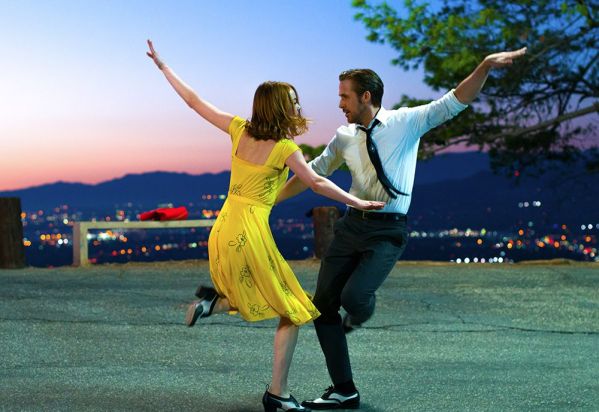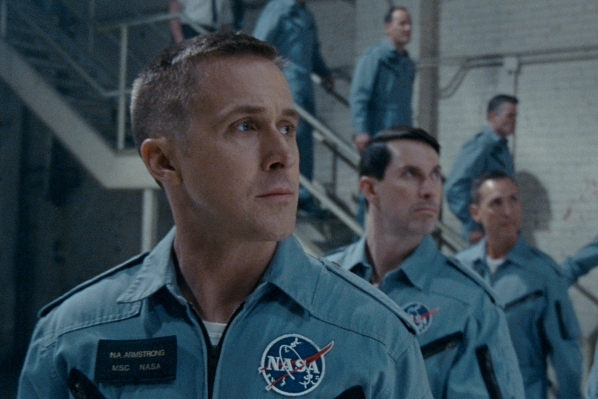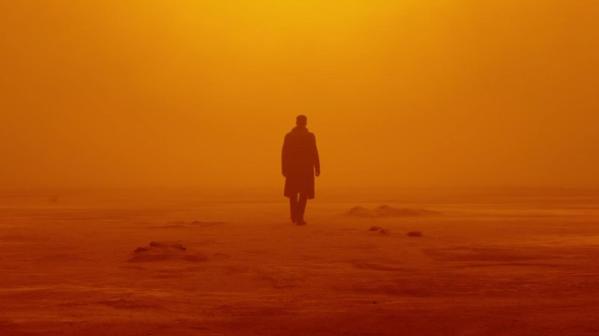
Ryan Gosling and Emma Stone dance the night away in La La Land, Damien Chazelle’s follow-up to Whiplash. (Source: Esquire)
Musicals have been extremely popular ever since the Great Depression leading to Hollywood’s Golden Age. They have the power to transport viewers to a light, whimsical world as a way to forget the harsh reality for awhile. The films starring Fred Astaire and Ginger Rogers, including Top Hat and Swing Time, had everyone smiling as the two stars danced as if they were weightless. After the Depression, more musical stars, such as Gene Kelly (Singin’ in the Rain, An American in Paris), Frank Sinatra (On the Town, High Society), Judy Garland (The Wizard of Oz, Meet Me in St. Louis, A Star is Born), danced and sang their ways to the top. With West Side Story, The Sound of Music, and Grease being some of the most popular musicals of the past century, only ten of them have ever taken home an Oscar for Best Picture. Most musicals of the 21st century–Across the Universe, High School Musical, and Mamma Mia!–are often harmless, but tend to be lousy and forgettable.
Enter Damien Chazelle. A 33-year-old Harvard graduate from Providence, Rhode Island, made his directorial debut with 2009’s Guy and Madeline on a Park Bench, the black-and-white indie film he made in college following a jazz trumpeter falling for a shy girl in modern-day Boston. Following the marvelously dark story of a drummer’s road to becoming the greatest in Whiplash (2014), he would eventually use the same concept of his first film about star-crossed lovers making ends meet in La La Land (2016), winner of 6 Oscars including Best Director for Chazelle (becoming the youngest person to win such an award). However, it lost to Moonlight for Best Picture after a shocking mix-up.
One of those rare musicals not based on a novel or a famous play, the movie is rich in originality while paying tribute to musicals of the past–from the French musical The Umbrellas of Cherbourg to the all-American classics mentioned above. Not only that, it stars two of the most gorgeous people working today: Ryan Gosling and Emma Stone.
As the late Roger Ebert once said in one of his reviews, “The first time seeing the movie, I focused on the foreground, and liked it. The second time I focused on the background, too, and loved it!”
That’s the case of me seeing La La Land five times in theaters (plus many more to come). I always catch what I missed from before. It gets better with each viewing.
Set in modern-day Los Angeles, Mia Dolan (Stone, who won an Oscar for her role) is an aspiring actress working at a cafe in the Warner Brothers lot. She attempts to earn a big break, despite the numerous failed auditions she goes to. One night, after attending a party with her roommates, she goes to a nightclub and sees pianist Sebastian Wilder (Gosling), who also has dreams of his own of opening his own jazz club (“I’m letting life hit me until it gets tired. Then I’ll hit back. It’s a classic rope-a-dope”). Eventually, they fall in love.
We see how their storylines unfold leading up to their first encounter at the jazz club, owned by the fiery Bill (J.K. Simmons, in a small yet effective role). Spotlights shine down on one another as Sebastian plays a beautiful piano piece that would make Frédéric Chopin blush.
Yes, Ryan Gosling is actually playing the piano here. Prior to filming, he would practice two hours each day for three months to learn the music by heart. He wouldn’t play any other song on the piano other than the songs Sebastian plays in the movie. One thing that’s impressive about Chazelle as a director is he never uses doubles or CGI for the actor whenever they are playing a musical instrument. There isn’t a single second where any of the hard work Gosling had to endure felt wasted.
Chazelle’s collaborator and college roommate Justin Hurwitz joins the likes of Leonard Bernstein and Irving Berlin providing a marvelous score and memorable music numbers. In a film rich in color, it pays homage to Los Angeles. Like the Oscar-winning song “City of Stars”, it’s a city filled with hopes, dreams, and disappointments. The opening music number, “Another Day of Sun”, resembles the hopes of success despite the many challenges that have yet to be faced. Set during a traffic jam on a busy highway consisting of one six-minute long take (one of many continuous, long shots in the movie), the dancers start getting out of their cars and break into song and dance, singing a chorus that goes, “Climb these hills, I’m reaching for the heights, and chasing all the lights that shine, and when they let you down, you’ll get up off the ground, ‘cause morning rolls around, and it’s another day of sun.”
In another beautifully-choreographed music number, “A Lovely Night”, we see the two lovebirds walking the Hollywood Hills on a gorgeous spring evening after a pool party (one of the funniest scenes in the movie is when Mia dances and lip-syncs to a cover of Flock of Seagulls’ “I Ran” after encountering Sebastian–no wonder why she dominated “Lip Sync Battle” on the Tonight Show back in 2014). While they confessed they don’t have a connection, they begin teasing with each other until they put on their tap shoes and pull off a dance routine reminiscent of Astaire and Rogers. It’s entirely difficult not to smile and giggle during these scenes when they are together.
Jazz might be a dead genre, but Hurwitz brings it to pure light. Sebastian introduces Mia to his world of the genre after Mia discusses how her love for classic movies made her want to pursue acting. He mentions jazz is not just for listening, it has to be felt. “It’s conflict and it’s compromise, and it’s new every night,” he says. “It’s brand new every night. It’s very, very exciting!”
When Seb’s old buddy, Keith (John Legend), offers him to be in his band, he reluctantly accepts to be a part of his company. However, it conflicts his relationship with Mia (more on that later). Seb is taken aback by the contemporary, electronic style of jazz while he prefers the old-fashioned style of jazz, like Louis Armstrong and Charlie Parker. “How are you going to be a revolutionary, if you’re such a traditionalist?” Keith asks him after rehearsal. “You hold onto the past, but jazz is about the future.” Another part of La La Land’s brilliance is the pure optimism these characters–especially Mia and Seb–have of going far and beyond, even though they get frustrated on how it might turn out at first.
La La Land contains the most realistic portrayal of love than any other romance film in recent memory. It also contains fantasy elements thrown into the mix, which is also a breath of fresh air. There are two spectacular sequences that contain no dialogue, and feel as if they are something out of a ballet. One is where Mia and Sebastian sneak into the Griffith Observatory planetarium after hours. They begin floating in the air and dance in the stars. It serves as a metaphor for their emotional connection with each other.
The other is the epilogue reminiscent to the “Rhapsody in Blue” sequence at the end of An American in Paris. It shows what would happen if Mia and Sebastian actually ended up together. They go through numerous luscious set pieces–all painted by hand, no less!–as if they have both stepped into a dream. With Linus Sandgren’s gorgeous cinematography, this movie is like a painting in motion!
After winning audience’s hearts in Crazy, Stupid, Love and Gangster Squad, Gosling and Stone are dynamite as the two lovers. While they wear gorgeous clothes (Gosling in a variety of suits, and Stone in a variety of dresses), their romance is filled with so much charm and humor. Not only can they dance, they can also sing well. No one can play a better dynamic duo than these two!
While Moonlight might have deserved its award for Best Picture of 2016 over this movie, La La Land will be a musical that will be discussed for years to come. It’s hard not to love an old-fashioned musical set in the present day. I hope Damien Chazelle will direct hundreds of movies after his upcoming film First Man, starring Gosling as Neil Armstrong, the first astronaut to ever set foot on the moon. La La Land is easily one of the best musicals of the century, and I wouldn’t be surprised if this is adapted into a Broadway musical in the coming years. Mia’s song, “The Fools Who Dream”, sums Los Angeles’ portrayal perfectly:
“Here’s to the ones who dream, foolish as they may seem; here’s to the hearts that ache; here’s to the mess we make.”



